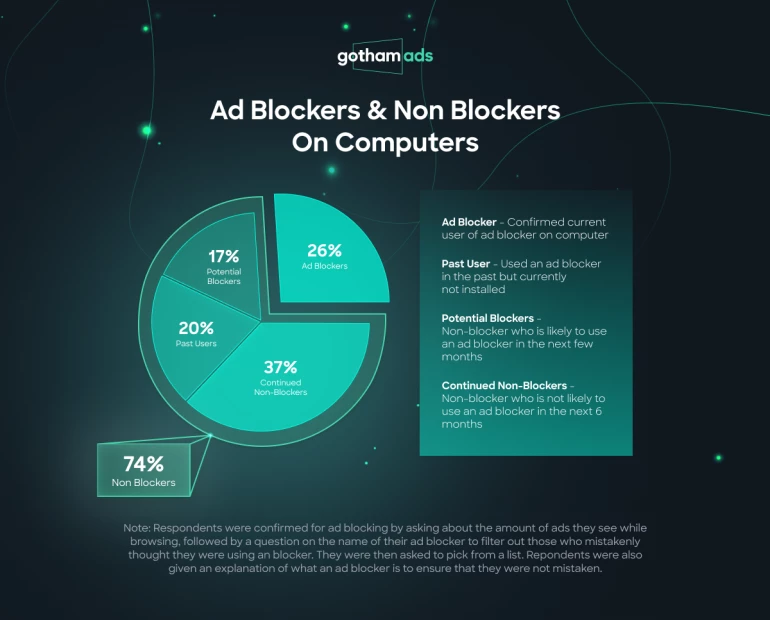Technological Innovations in SSPs: Benefits and Challenges

A supply-side platform (SSP) is a technology platform that helps publishers manage and optimize the sale of their digital advertising inventory, such as display ads, video ads, and mobile ads. The primary purpose of an SSP is to maximize the revenue generated from a publisher's advertising space while also ensuring that the ads displayed are relevant to the audience.
The SSP market is showing significant growth and potential in the digital advertising landscape. The global SSP market was valued at USD 23.95 Billion in 2023. The market is expected to continue growing at a CAGR of 13.36% from 2023 to 2033.
These statistics indicate a robust and expanding market, reflecting the increasing importance of SSPs in digital advertising and the wider digital economy.
Overview of Technological Innovations in SSPs
Technological innovations have significantly enhanced the functionality and effectiveness of supply-side platforms in the digital advertising landscape. For example, AI and machine learning algorithms are increasingly used in SSPs to predict the best possible match between available ad inventory and advertiser demand. These technologies are integrated into SSP platforms to analyze large sets of data, including user behavior and engagement patterns. This helps in dynamic pricing models and more effective matching of ads with the appropriate audience segments.
Moreover, some SSPs are exploring the integration of blockchain technology to bring transparency and security to ad transactions. Blockchain can help in combating fraud, ensuring the authenticity of ad impressions, and providing a transparent record of transactions.
With faster internet speeds and lower latency, 5G technology can significantly improve the delivery and loading times of online ads. So SSPs can leverage 5G to ensure more efficient ad delivery, especially for rich media ads and video content, enhancing user experience
Innovations in ad formats, including interactive and immersive ads (like AR and VR ads), are being supported by SSPs, offering new and engaging ways for advertisers to connect with audiences. These technological advancements are continually evolving, shaping the future of digital advertising and offering publishers sophisticated tools to maximize their ad revenues while enhancing user experience.
Benefits of Using a Supply-Side Platform
SSPs play a crucial role in real-time bidding transactions, acting as the "auctioneers" in the realm of online advertising. Using a SSP offers several benefits for publishers in the digital advertising space. Let's analyze each of them.
Increasing Revenue
SSPs optimize the sale of advertising inventory, ensuring that publishers get the best possible price for their ad space. By allowing real-time bidding, publishers can maximize their revenue from each ad impression. It is important for the sustainability and publishers growth.
Real-Time Analytics and Reporting
Real-time analytics enable SSPs to understand and manage their ad inventory more effectively. By analyzing data as it comes in, SSPs can make immediate decisions on which ads to display, based on factors like user behavior, time of day, and content relevance. This leads to more efficient use of ad inventory and maximizes revenue opportunities.
Efficient Inventory Management
It ensures that the available ad spaces are utilized optimally, leading to maximized revenue. SSPs can determine the best possible combinations of ads and placements, ensuring that publishers get the highest yield for their inventory. By efficiently managing inventory, SSPs can provide better targeting options for advertisers, matching ads to the most relevant and high-performing spaces. This enhances the effectiveness of ad campaigns, leading to higher advertiser satisfaction and repeat business.
Access to a Wider Range of Advertisers
By connecting with a larger pool of advertisers, SSPs increase the chances of finding the best possible match for each ad impression, which can lead to higher bids and, consequently, higher revenue for publishers.
Ad Quality and Brand Safety
SSPs give publishers control over the types of ads displayed on their sites, helping maintain brand safety and ensure that the ads align with the publisher's values and audience expectations.
Tech Challenges About SSPs Evolution
Ad fraud is the most significant problem for the programmatic advertising industry. The inability to audit ad inventory and trace it to specific users, as well as untested ways to bundle inventory, will, unfortunately, increase the likelihood of fraudsters using various tactics to manipulate the ad-buying process, including bots, domain spoofing, click injection and cloaking, leading to the loss of significant revenue for advertisers and publishers.
Another challenge for SSPs is increasing technological complexity. The world of mobile SSPs is increasingly becoming technologically complex. To effectively manage this complexity, it's essential for an SSP to have a robust architecture. This architecture must be adept at integrating a diverse array of ad network SDKs (Software Development Kits), continuously updating them, and ensuring they remain in sync with evolving functionalities, creative formats, and other industry developments. The intricate nature of these systems means that most enterprises invest heavily in an in-house software development team dedicated to this task.
Ad blockers are also a substantial obstacle for SSPs, as they significantly diminish the effectiveness and reach of digital advertising efforts. These tools restrict the display of online advertisements, posing a challenge for SSPs in effectively monetizing their ad inventory and delivering value to their clients. The growing popularity of ad blockers among internet users has led to decreased ad viewability and, consequently, reduced revenue streams for SSPs.

To counteract this trend, SSPs need to innovate in the realm of ad formats, prioritizing those that enhance the user experience.
Opportunities for SSPs
SSPs can enhance their offerings, stay competitive, and meet the evolving needs of publishers and advertisers in the digital advertising ecosystem. Here are a few opportunities that can help with it.
Focus on anti-fraud solutions
To effectively tackle this issue, it's imperative for SSP vendors to integrate sophisticated anomaly detection tools within their platforms. These tools are essential for preempting supply-side fraud. They work by identifying irregular patterns and behaviors that deviate from the norm, signaling potential fraudulent activity.
Incorporating leading fraud prevention platforms, such as Pixalate. This system can significantly bolster an SSP's anti-fraud capabilities and equip advertisers with powerful tools to identify and counter various forms of ad fraud.
Opportunity to create value
SSPs should focus on proving their value beyond acting as an intermediary. Publishers can look beyond a single-touchpoint solution and towards partners that offer added ROI throughout the programmatic value chain.
One of the ways to drive value is by zeroing in on channels where inventory is in short supply and focusing on becoming an access point for high-quality placements.
Conclusion
Technological advancements have introduced fresh challenges for SSPs, particularly in the mobile sector. These platforms are now compelled to compete intensely for superior data and high-quality ad inventory. To flourish in this environment, SSPs must broaden their services and forge substantial partnerships. Integrating robust anti-fraud measures, ensuring transparent reporting, and providing access to direct inventory, along with programmatic capabilities, are critical steps for SSPs to ensure their sustained growth and long-term viability.
Capitalizing on these emerging opportunities necessitates SSPs to be technologically agile and to deepen their engagement with business and technology partners. While this path demands adaptability and collaboration, the potential for progress is significant.


